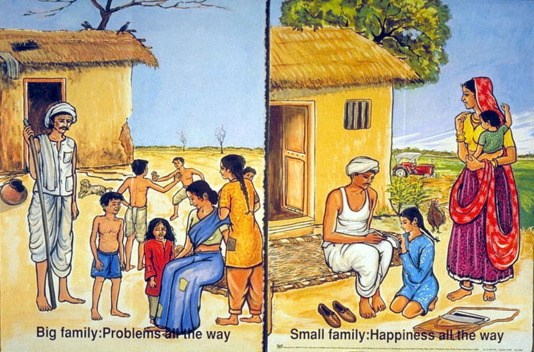New paper: Fertility, household size and poverty in Nepal
François Libois and Vincent Somville have published "Fertility, household size and poverty in Nepal" in World Development. In the paper they study how fertility affects household size, composition and poverty in Nepal.

HOUSEHOLD SIZE AND POVERTY
In Nepal, as in many other countries, we observe a positive correlation between the number of children and household poverty.
Before spending resources on household reduction campaigns or on more aggressive policies, as has been done in India and China, policy-makers ought to know exactly the channels through which reduced fertility might affect income per capita and, in terms of increased incomes and poverty alleviation, what benefits to expect.
One important limitation of existing studies is that they assume households are made of nuclear families, and they do not take into account that changes in fertility can have direct effects on the households’ size and composition. Those effects are, however, crucial to understand, as they will have an impact on the final outcomes (for instance, the household per capita consumption). When using the gender of the first born as an exogenous source of variation in the final number of children, we find that women who have more children in fact host fewer other relatives in their households. As a result the size of the households does not increase with additional births in the longer run, and the link between fertility and poverty disappears.

Household size in Nepal
Analysing data from around eight thousand households surveyed in the Nepal Living Standard Surveys, Libois and Somville find that a couple’s number of children affects its household’s size in an unexpected manner: once fertility is completed, for women aged 40 to 50 and eventually later on, household size decreases with additional births. Nepalese households are embedded into larger social networks, and those households with fewer children tend to host more other people. An additional child increases the number of nuclear family members but decreases the number of other adult hosts.
In Nepal elderly couples who had fewer children host, on average, more relatives who are outside the immediate family unit. This result sheds light on the heterogeneous relation between the number of children and household size over the life cycle. It also implies that reductions in a household’s fertility may have an ambiguous impact on its per capita consumption, which depends on how the household’s composition responds to new births and changes over time: in this sample, an old household’s per capita consumption is not affected by the number of births.
The data from the Nepal Living Standards Surveys show that couples who had fewer children tend to host more grand-children and in-laws than couples with more of their own children. Because households are parts of extended family networks, those who have fewer children simply host more other relatives. This finding concurs with the arguments of Cox, Fafchamps, Schultz, and Strauss (2007), who emphasized the importance of kinship networks in redistributing resources. In our case, people, rather than goods or money, move between households.

Adaptability and intelligence influence migration
Dynamics should be taken into account in population control policies
The findings reveal new complexities in the relationship between changes in fertility and poverty. The immediate effect of having more children is to increase the household size. However, households may also include various people such as grand-parents, uncles and aunts, cousins, grand-children, even people who are not blood-relatives. When a family has an additional child, some of the other people may move away (or may not come in). If a couple has few children at home they are likely to host more non-immediate family members or acquaintances.2
The instrumental variable approach also shows that additional children increase the number of nuclear members but decrease the number of non-nuclear members among “old” mothers. This can be explained by a preference for large households in households with more members or by economies of scale in larger households that decrease the cost of raising additional children.
Having an additional child increases the size of young households and is negatively associated with their per capita consumption. However, when mothers get older, there is no longer a relation between their number of children and per capita consumption.
This result emphasizes the role of family networks and hosting in modulating the household’s response to new births. These dynamics should be taken into account in population control policies. Our study shows that having less children means that parents can expect to host more relatives, and more adults in the longer run. If hosting relatives is the best old age support that parents can hope for, then the quantity of children is, on average, not the best old age insurance.
See all publications from FAIR
Succession system and labour per land unit
The finding is consistent with two potential mechanisms: (i) the succession system of Nepal which combines a partition regime and inheritance; and (ii) an argument related to the equalisation of labour per land units. Richer data, combining this approach with precise information on the history of household level shocks, would allow to precisely separate the extensive from the intensive margin in the relation.
This difference may actually have important consequences in terms of poverty and environmental impact. First, we show that it is not reasonable to expect a surge in consumption per capita in households with fewer children, at least once mothers have completed their fertility. Second, numerous goods are public at the household level, from primary consumption goods such as a common roof or heating, to more complex products such as insurance arrangements. They benefit more members in larger households and do increase the average consumption per capita in a way that is hard to measure. Third, the complexity of the household structure raises more specifically the question of the income and consumption distribution between household members. Fourth, public bads and pollution are prominent at the household rather than individual level. As Axinn and Ghimire (2011) argue, households rather than people determine, for instance, land use and deforestation. The relative reduction in the number of households associated with lower fertility may actually induce a positive feedback loop on household opportunities.
